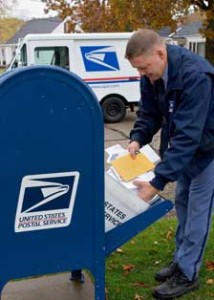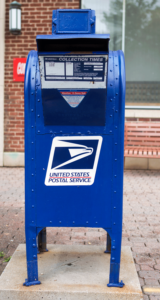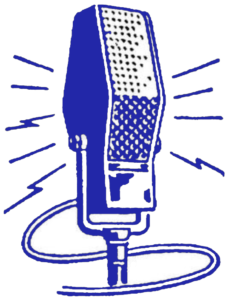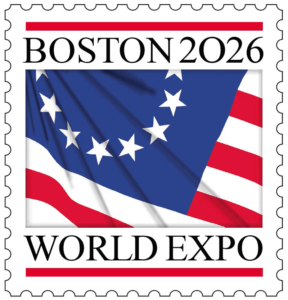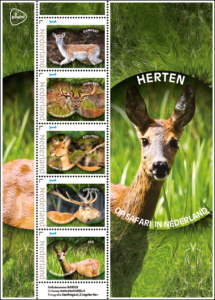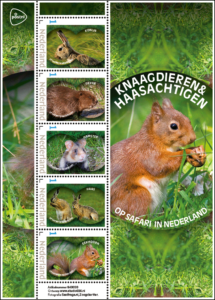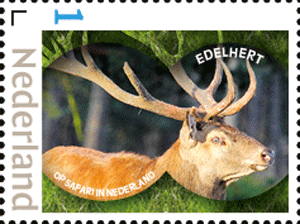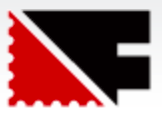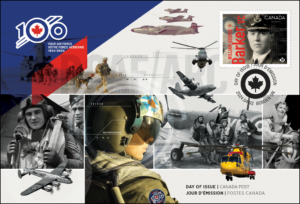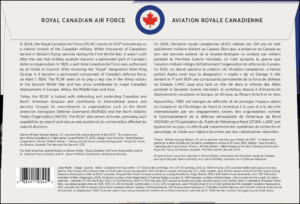The Basics Of Exhibiting
by John M. Hotchner
At stamp shows, I expect most attendees make a beeline for their favorite dealer as soon as the doors open. That’s what I did last week, even though my reason for being at the show was to be a jury member [exhibit judge]. First things first!
That said, I’ve noticed more people also looking at exhibits; and when I ask them about  their interests, I also get many questions about the reasons for exhibiting and how exhibits are judged. Figuring that there is growing interest and lots more people who would ask questions if they could, I’m going to “spend” this column answering the most often asked questions.
their interests, I also get many questions about the reasons for exhibiting and how exhibits are judged. Figuring that there is growing interest and lots more people who would ask questions if they could, I’m going to “spend” this column answering the most often asked questions.
Where do you find stamp and cover exhibits? They can be found at local club shows, regional shows, and at about 30 national exhibitions across the country, accredited as such by the American Philatelic Society. Naturally, exhibitors tend to start at the bottom of that pyramid and move upward as their exhibit(s) improve. But exhibitors are not prohibited from starting at the national level if they prefer.
Does exhibit evaluation stay the same from one exhibition level to another? As one goes from local to national (and perhaps ultimately to international) the expectations of the exhibits go from fairly easy judging that stresses encouraging the exhibitor, to judging that emphasizes accomplishment in the elements of knowledge displayed, rarity, the telling of a complete story, and perfection of condition.
Why do people exhibit? There are as many answers as there are exhibitors because there are several reasons, and every exhibitor is motivated by a combination of them. Some exhibitors are primarily mug hunters. They see everything in life as a contest and they are driven to win. Others are driven to show off the work they have done to solve the riddles that their subject presents. They take pleasure in research and finding new answers to old questions.
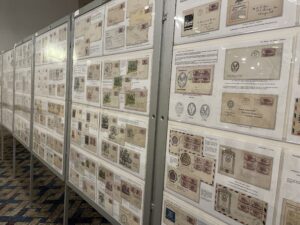 Yet others are teachers at heart and want to grab the attention of a viewer and pull them into the subject on which they have lavished time, money, and study. Some of these folks also serve as recruiters; exhibiting because they hope to interest other collectors in their field or lure new collectors into the hobby.
Yet others are teachers at heart and want to grab the attention of a viewer and pull them into the subject on which they have lavished time, money, and study. Some of these folks also serve as recruiters; exhibiting because they hope to interest other collectors in their field or lure new collectors into the hobby.
Some do it to prove to themselves that they can do what they see others doing. More than once I have heard a viewer at the frames say soto voce, “I can do this!”
Some don’t care about awards. They just get a charge out of organizing their material into an exhibit, often to show off to their family that they are not hermits and that they can do something with their hobby that others will pay attention to. Getting a medal is gravy.
All exhibitors, I think, like to receive some sort of recognition for their work, hope that someone will see what they have done and offer them additional stamps/covers or some information that will fit in, and maybe make the exhibit better over time. This of course is where judges come in.
How does competition work? Most assume that exhibits are competing against each other. That is true only after medals (from Bronze to Large Gold) have been given. Medals are given based on how well the exhibit meets the criterion of being the best it can be. In other words, there is no First, Second and Third (except at some small club shows). If five exhibits earn a Large Gold, then five exhibits will get a Large Gold medal. Only after the medals are awarded is there competition between exhibits, and that is among the Large Golds for the best–in-show award, called the Grand Award, the Reserve Grand (second best), and for special awards given by specialty societies for the best exhibit in their subject area.
How is judging done? National-level shows are required to have five American Philatelic Society (APS) accredited judges; one of whom will be designated as the jury chair: a senior judge who has been specifically accredited to perform that task. Sometimes there will also be an apprentice judge, about which more later. No judge can know everything about everything. Philately is too broad and deep for that, so juries are selected so that they will have the broadest possible knowledge base.
The jury evaluates each exhibit against specific criteria, and awards points up to a maximum permitted. The criteria include:
- Treatment – 20 points How well does the exhibit tell the story promised by the title? How logical the flow of the story is, whether there are gaps in the story, etc.
- Importance – 10 points How does the subject rate in the development of postal operations (is it a mail crossroads or a byway, is it a crucial time period or one where not much was happening, do the stamps featured break new ground in some way? Is the exhibit itself one that has never been done before? Is it the last word on the subject?
- Knowledge – 35 points Is the information in the exhibit accurate and complete? Has the exhibitor developed new knowledge about the subject or found previously unreported material?
- Rarity – 20 points Is the material in the exhibit difficult to find?
- Condition – 10 points Is the material in the exhibit in the best condition that can be found for what it is?
- Presentation – 5 points Is there anything that distracts from the stamps and covers? Is the exhibit inviting to the viewer?
How do points translate to medals? Large Gold 90-100, Gold 85-89, Large Vermeil, 80-84, Vermeil 75-79, Large Silver 70-74, Silver 65-69, Bronze 60-64. Both judges and exhibitors understand that judging is an inexact science, dependent upon the knowledge of the judges, subjective views of how well the exhibit puts across its theme, how well the exhibitor identifies the best material in the exhibit, and how well the exhibitor makes his or her case for knowledge and rarity. Thus, it is possible for the same exhibit to receive different point totals (and sometimes medals) at different shows. It is unusual for an exhibit to vary by more than one medal level from one show to the next, but it can happen, especially when the exhibitor has added material to improve the exhibit between shows.
What is the role of the jury chair? The jury chair is responsible for working with the show’s Judges Coordinator to make certain that the judges get the information they will need to evaluate the exhibits at the show, and that each judge is assigned a number of exhibits for which he or she will be the first responder at the critique session. The jury chair also tries to be sure that the judges do a good job of giving both positive and negative feedback to exhibitors so they can improve their exhibits. The jury chair also evaluates the show to make certain it is in compliance with its accredited status, and mentors and evaluates (with input from the entire jury) the performance of the apprentice if there is one.
How do judges prepare to judge? The exhibition’s Jury Coordinator usually informs the jury about six weeks before the show of the titles of the exhibits that have applied for entry and been accepted. The jury will then receive a copy of the exhibits’ title pages and a specially done “synopsis” that each exhibitor does expressly for the jury. They speak to the judging criteria and list philatelic literature that will help the judges to understand the subject, and to know what to expect in the way of material. Some of these references may be available in the extensive libraries that many judges maintain, but they may also access literature from the American Philatelic Research Library.
What feedback do exhibitors receive? Exhibitors get feedback in four ways:
- Every national show, and most regionals will have an in-person Feedback/Critique Session where they may ask the assembled judges to comment on their exhibit; usually the first responder will speak first, but other judges may chime in with both good points, areas that need improvement, and suggestions for how that improvement might be approached.
- Judges make themselves available for at-the-frames critique, where exhibitors can have more time to get more detailed feedback.
- The first responder will complete a Uniform Exhibit Evaluation Form (UEEF) that will be given to the exhibitor with the exhibit when it is returned. It summarizes the jury’s findings, provides the point scores, and includes the name and email address of the first responder.
- The exhibitor may contact the first responder after the show to discuss points made in person feedback or in the UEEF.
Are judges compensated for the work they do? Each judge receives an honorarium of $350 (some shows do provide more) that helps with but rarely covers the travel and lodging expenses associated with attending the show they are judging. It is expected that judges will absorb some of the costs as judging is not supposed to be a money-making proposition. It is thought of as a way that the judge gives back to the hobby that has provided pleasure over the years.
How does one become a philatelic judge? There are only about 75 currently accredited judges, and about 150 judging slots each year at the national level. So there is a need for more accredited judges. Advanced exhibitors who have an exhibit that has won a Gold medal may declare their intention to become a judge and register with the Committee on the Accreditation of National Exhibitions and Judges (CANEJ), part of the APS. Accredited judges may also ask exhibitors they consider likely candidates. Potential judges must serve four apprenticeships (at their own expense) during which they demonstrate their ability to prepare for, assess, and critique exhibits, work collegially with other judges, and learn how to interact in helpful ways with the exhibitors. They are assessed and mentored as they tread this path. And after the fourth apprenticeship the full CANEJ Committee reviews the reports of their performance and votes to accept, reject or require further apprenticeships.
Are there resources available to exhibitors and judges? Yes. CANEJ, which is an APS Committee, publishes The APS Manual of Philatelic Judging and Exhibiting, 7th Edition (65 pages) which is available at no cost on the APS website.
There is a national society called the American Association of Philatelic Exhibitors (with about 800 members). AAPE has a website at www.aape.org that provides a wealth of information on the organization’s services, back issues of its quarterly journal The Philatelic Exhibitor, information on how to join, and resources for exhibitors (specifically, a brochure titled Getting Started In Philatelic Exhibiting.)
If I have not answered a question you have about exhibiting and judging, please do let me know.
Should you wish to comment on this column, or have questions or ideas you would like to have explored in a future column, please write to John Hotchner, VSC Contributor, P.O. Box 1125, Falls Church, VA 22041-0125, or email, putting “VSC” in the subject line.
Or comment right here.
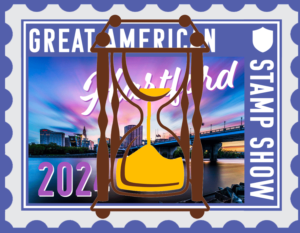 table (which involves a commitment to STAFF it) should consider sharing with another society. The same is true if all the society tables are gone: Share. You’ll find the links for societies, dealers and more here.
table (which involves a commitment to STAFF it) should consider sharing with another society. The same is true if all the society tables are gone: Share. You’ll find the links for societies, dealers and more here.
